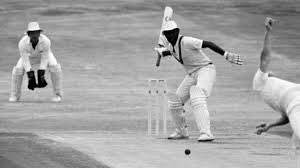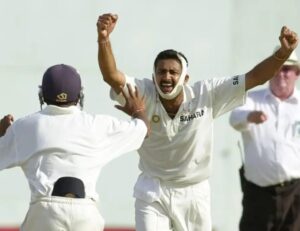
Ashok Namboodiri
Much has been written about the famous win that India pulled off in the last Test of the recent Andersen-Tendulkar series. Many more write-ups are still in the making. And for very good reason.
The cricket eco-system has been transformed with the advent of data analytics, high flying strategies and scientific management of workload. The one thing that remains intact though are the moments of raw, unfiltered courage when a cricketer turns up bloodied and bruised to do duty in an arm sling, bone cast or sometimes the jaw strapped in a bandage. The recent India-England series saw two such moments — one of course was Chris Woakes walking out to join Gus Atkinson at the end of the innings. Ironically, it was in the Manchester Test before that when Rishabh Pant walked out with an injured toe to score a gritty 54 off 75 balls; an injury inflicted by the same Woakes.
Woakes, in visible discomfort, wasn’t going to let a sling deny him the chance to stand with his team. It didn’t matter that his presence didn’t change the result. What mattered was that it changed the mood — from resignation to resistance.
An iconic moment in my head was in 1984 when Malcom Marshall came on to bowl with an injured thumb in the Test against England and went on to take nine wickets, generating the same swing and menace that emanated from fury rather than fitness. It’s an immortal reminder that some players are just wired differently.

Ravi Shastri commentating on Woakes coming out to bat talked about Colin Cowdrey coming out to bat at No. 11 in the 1974 Waca Test at Perth against a menacing Australian attack led by Jeff Thomson, arm in a sling. He was 41 then and has alredy established his credentials; he didn’t score a single run. But he made a point: honour isn’t just about glory; sometimes, it’s about presence.
Yet another image that is now part of cricketing folklore… Anil Kumble playing in the Antigua Test in 2002 had his jaw fractured by a bouncer from Merv Dillon. He came out to bowl 14 overs, jaw strapped in a white bandage and scalped the mighty Brian Lara. “At least I could get one wicket for my country,” he later said. That wasn’t just a line — it was a creed.

And yet another gritty image is Graeme Smith walking out to bat at No. 11 in the Sydney Test in 2009, in an attemt to force a draw. Every ball he faced was pure agony and the audience lived it. Eventually, he was dismissed, but by then, the scoreboard was irrelevant. The scoreboard of the soul was lit and on fire.
Why do they do this? Cricketers are not reckelss, this is about taking responsibility for their team, their flag and for their craft. Countless others before them have done it and with many more to follow.
In cricket, especially Test cricket, there’s no substitute. You can’t ‘sub’ character. You can’t outsource courage. The game has a memory. And it remembers who turned up when it hurt the most.

These moments echo across all sports. Kerri Strug landing a vault with an injured ankle to win gold for the US gymnastics team in 1996. Rafael Nadal battling through injuries to win five-set epics. Even Lionel Messi vomiting on the pitch, yet refusing to come off for Argentina. Sport doesn’t always demand perfection. But it does reward character.

You don’t always win with your body. In sport, just as in life, sometimes you win by simply showing up. When there is every reason to defend why they do not need to, a player gets up and goes out for his or her team and nation saying “I will play”.
Because in sport, as in life, there is no greater honour.
Follow Revsportz for latest sports news



